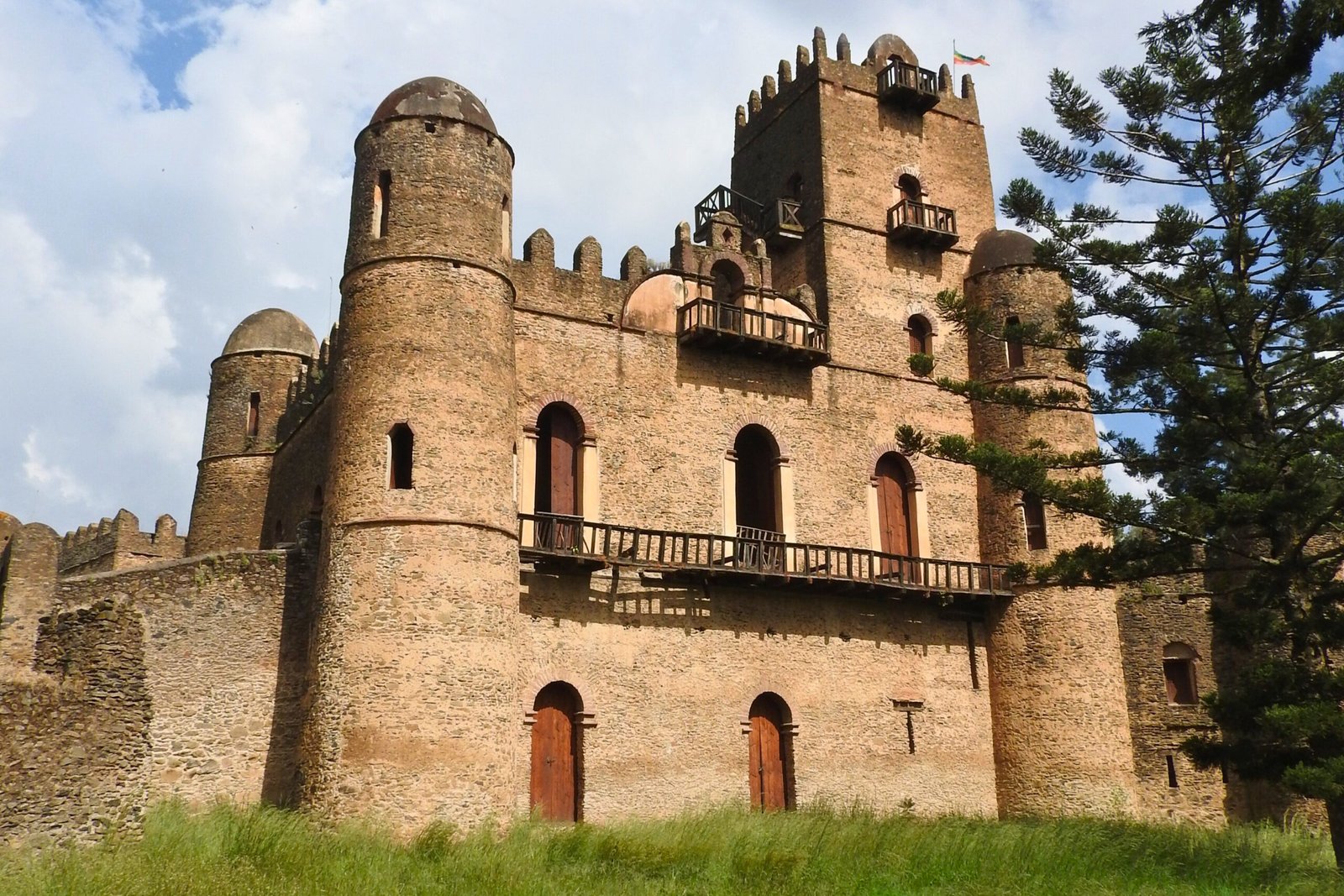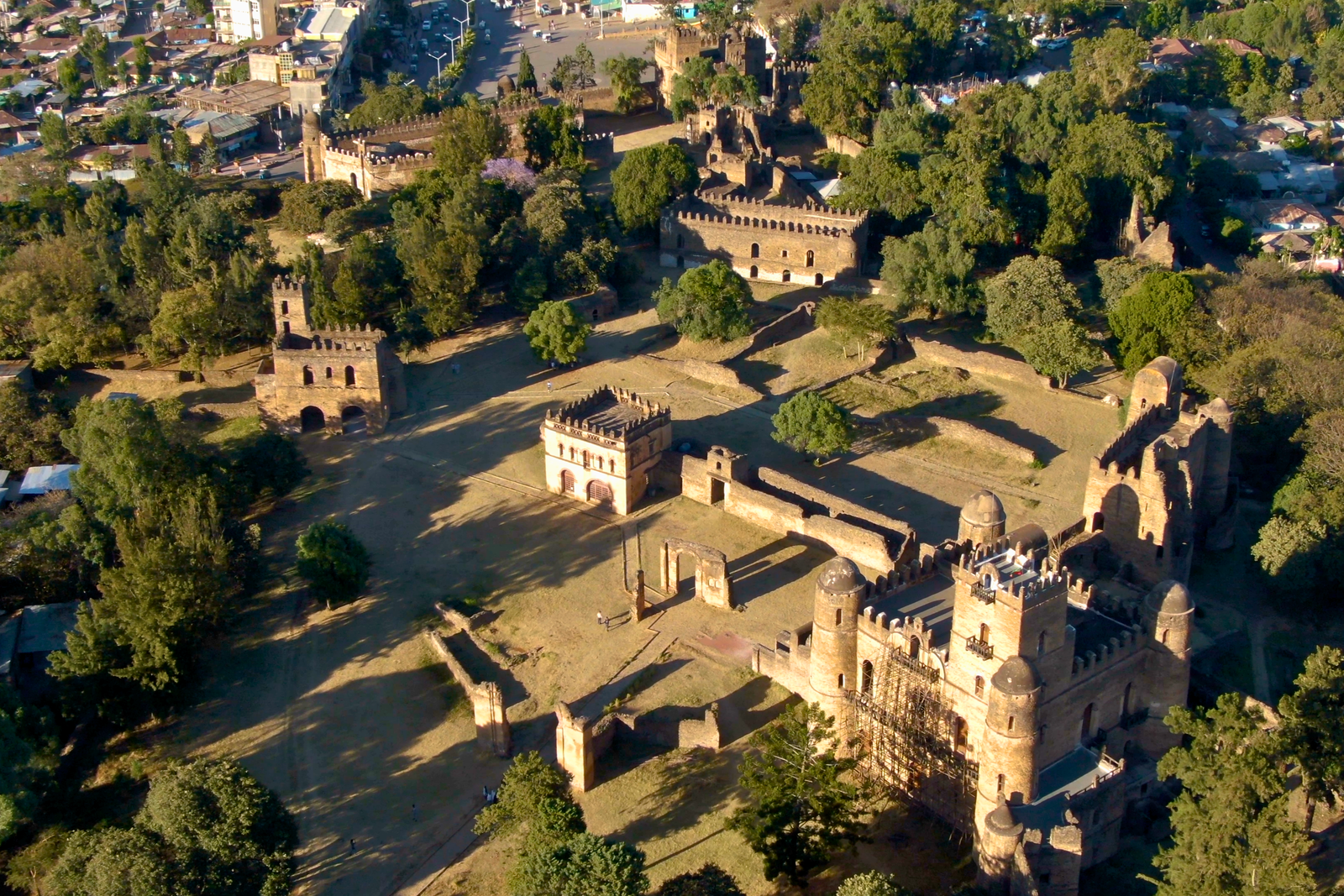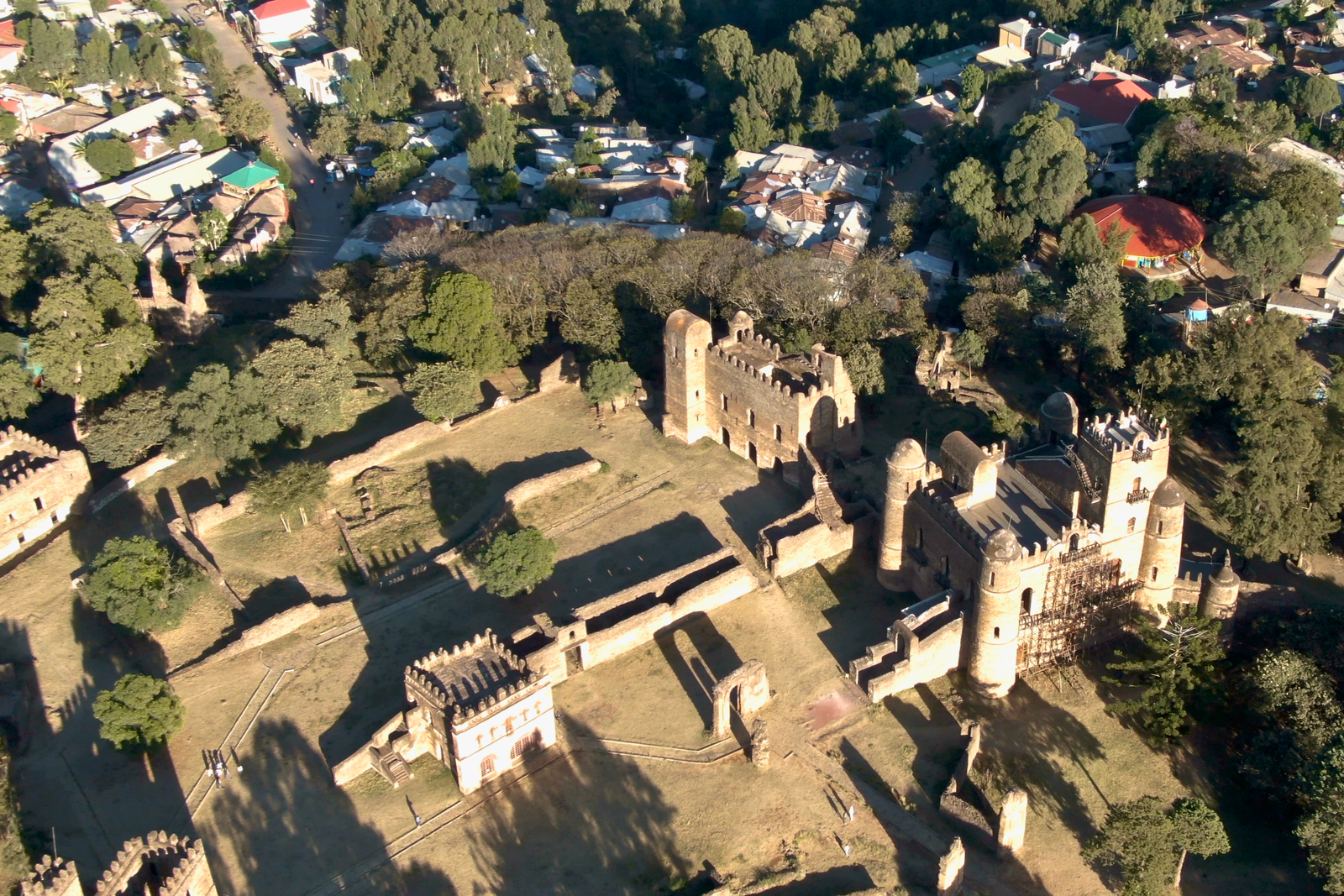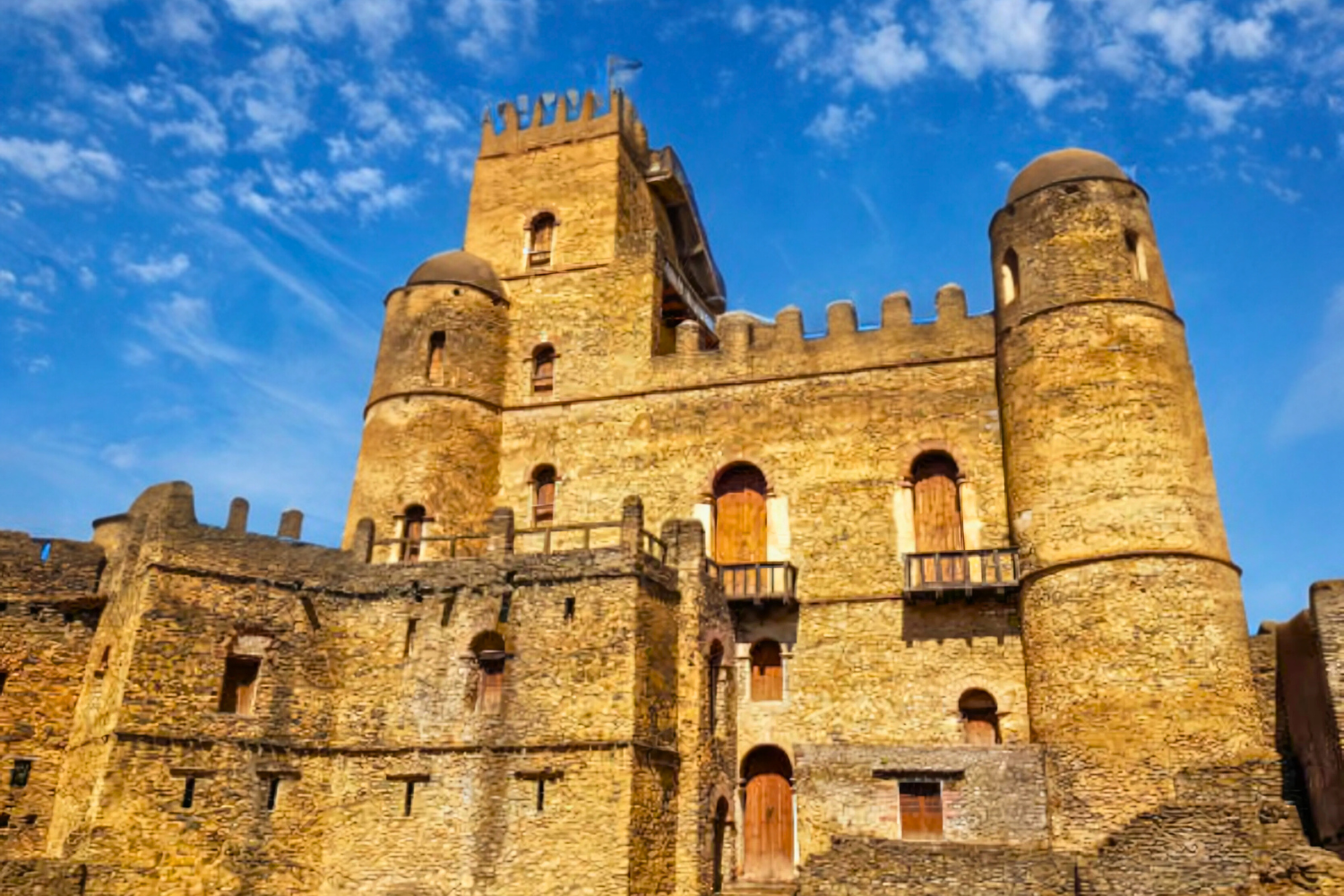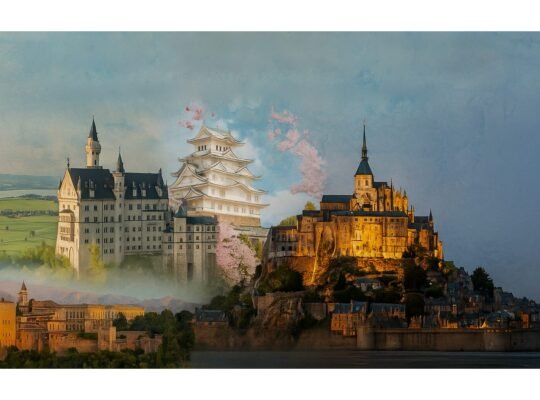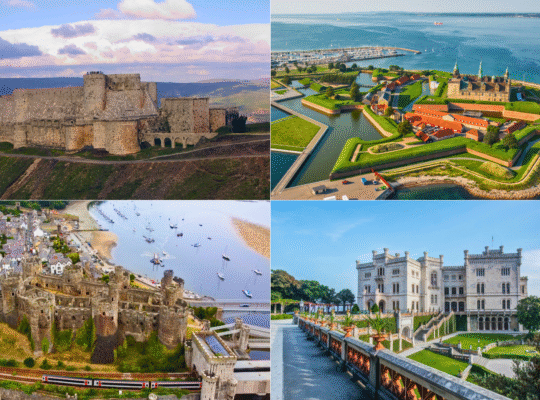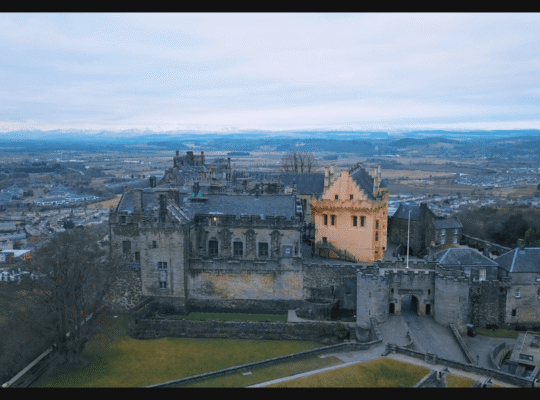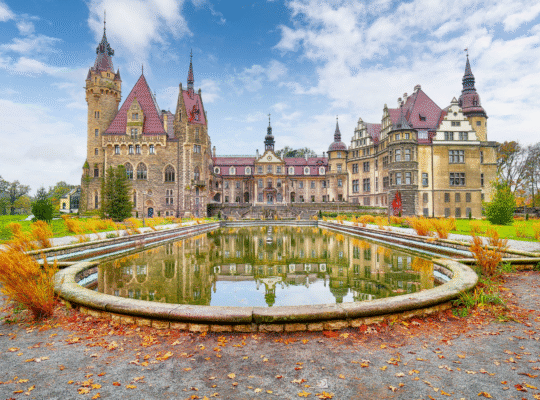When I first arrived in Gondar, Ethiopia, I didn’t expect to be so moved by stone and silence. The early morning mist clung to the hills, and through it, Fasil Ghebbi emerged like a mirage from another time. A local boy selling coffee on the street pointed and said, “King Fasil built that to touch the sky.” I smiled, not entirely sure if it was metaphor or myth—but standing before those walls, I believed him.
There’s something about old places that pulls you in. You don’t just see them; you feel them—under your feet, in the wind, in the stories people still whisper. Fasil Ghebbi wasn’t just another historical stop. It was the heartbeat of an empire.
Later that day, I watched the sun move across the sky from one of the fortress’s stone balconies. Children played nearby, unaware of the centuries layered beneath their footsteps. One local historian told me, “In Gondar, we don’t forget—we carry history in our bones.” And that line stayed with me.
Quick Facts
📍 Location: Gondar, Amhara Region, northern Ethiopia
🏗️ Construction Year: Began in 1636 under Emperor Fasilides; expanded through the 18th century
🏰 Architectural Style: Gondarine architecture (Portuguese, Indian, Axumite)
🎭 Famous For: Royal residence, imperial court, unique hybrid architecture, Timket celebrations
👑 Notable Residents: Emperor Fasilides, Emperor Iyasu I (The Great), Emperor Dawit III, Emperor Bakaffa
🏆 UNESCO Status: Yes (Fasil Ghebbi, Gondar Region was designated a UNESCO World Heritage Site in 1979)
History & Legends of Fasil Ghebbi
Gondar wasn’t always the center of power. Before Emperor Fasilides came to power, Ethiopian royalty led nomadic lives, moving from region to region. But Fasilides changed that. He chose Gondar as his permanent capital—a decision that wasn’t just political, but deeply symbolic. Some say he was guided there by a vision, others say a buffalo led him to the spot. Whatever the truth, he planted roots where none had existed before.
Over the next century, emperors added to the compound—each ruler leaving their mark. Iyasu I was known for his brilliance and cruelty. He built new structures and invited artisans from abroad. Dawit III continued the expansion. Together, their efforts created a royal city within walls, where Ethiopian Orthodox rituals intertwined with echoes of Portuguese missionaries and Indian craftsmen.
During its golden age, Gondar wasn’t just a political capital—it was also a center for theological scholarship and artistic innovation. Manuscripts were produced by hand, adorned with vibrant illustrations, and the city echoed with spiritual chants.
And then there are the legends. Some claim a secret tunnel leads from Fasil Ghebbi to the nearby church of Debre Berhan Selassie. Others whisper that Emperor Fasilides himself had healing powers, and that the fortress was more than political—it was spiritual.
There’s even a tale of a lion that once guarded the gates, said to have been tamed by Fasilides himself. Locals say the spirit of that lion still roams the grounds on moonlit nights.
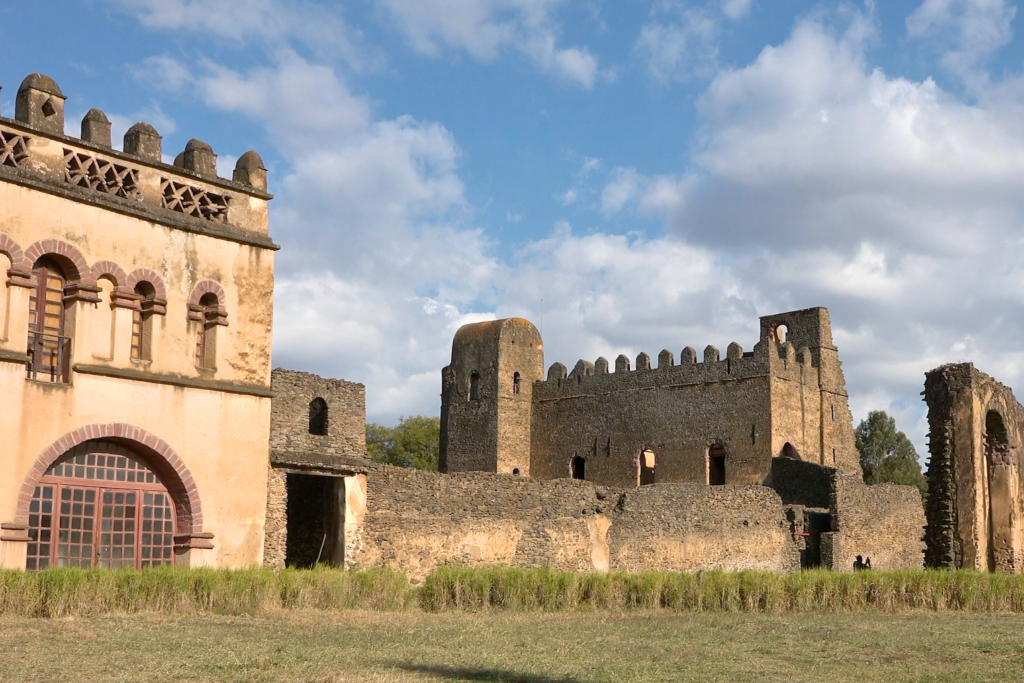
Architecture & Design
It’s one thing to read about architecture. It’s another to walk through it. Fasil Ghebbi is like a living museum—each corner a blend of styles, each structure with a different voice.
The fortress walls stretch wide, enclosing gardens, palaces, and chapels. Portuguese influence is clear in the rounded towers and battlements, while the Axumite roots come through in the stonework—rugged, proud, enduring. Some of the arches reminded me of Indian palaces I’d seen, a reminder of how far Ethiopia’s cultural reach once extended.
Inside, Fasilides’ Palace is the centerpiece. With its massive towers and echoing rooms, it’s not hard to imagine court life here—ministers whispering plans, guards pacing, musicians playing in the shadows.
Iyasu’s palace, now partially ruined, still hints at opulence. Locals say it once held gilded ceilings and imported mirrors. Even in decay, it’s beautiful—like a memory you’re grateful to catch a glimpse of.
Walk further and you’ll find the Library of Dawit, where scholars once gathered. Though the books are gone, the energy of learning remains. There are also smaller, lesser-known buildings—chapels, audience halls, even servant quarters—each with its own story to tell.

Visiting Fasil Ghebbi Today
🛣️ How to Get There
Gondar is just over an hour’s flight from Addis Ababa. Once in town, getting to Fasil Ghebbi is easy—tuk-tuks (🛺) zip through the streets, and most locals are happy to point you in the right direction.
You can also take long-distance buses for a more scenic (and budget-friendly) journey. Though slower, the view of the Ethiopian Highlands rolling past your window is unforgettable.
🎟️ Entry Info & Tours
You’ll pay about 200-500 birr (~$4-10 USD) to enter, and it’s worth every cent. Hiring a guide (🎧) for another $5–$15 makes the stories come alive. Many guides are locals who grew up hearing legends about the place from their grandparents.
Some offer multilingual tours, and a few even share family connections to people who once served at the court. Ask questions—they're often eager to share the lesser-known tales.
📅 Best Time to Visit
Come between October and March (☀️). The air is cool and clear. If you visit in January during Timket (🎉), the whole city transforms—priests in white robes, chanting, drums, and crowds gathered at Fasilides’ Bath for the Epiphany celebration.
Even if you miss Timket, the dry season makes wandering the grounds a pleasure. And in the rainy season? The moss grows thicker, the colors richer—more challenging, but hauntingly beautiful.
♿ Accessibility & Tips
Wear sturdy shoes (👟)—paths are uneven, and some towers involve steep steps. Gondar sits high, so drink water and take breaks. Dress respectfully (🧕), especially if you plan to visit churches. And bring cash (💰)—most places still don’t take cards. Hours are 8:30 AM to 5:30 PM daily (🕗).
Photography is welcome, but drones require special permission. Bring a notebook or journal—you may want to jot down thoughts as you explore. And don’t rush. Sit. Listen. Let the place speak.
Nearby Attractions in Gondar
- Debre Berhan Selassie Church: Just a short stroll away. Its painted ceiling—angels staring down with wide eyes—left me speechless.
- Fasilides’ Bath: Quiet most of the year, but during Timket, it comes alive with chanting, candles, and spiritual fervor.
- Gondar Market: Chaotic, colorful, and unmissable. I bought handwoven scarves and more coffee than I could carry.
- Simien Mountains National Park: If you’ve got a few extra days, take a trek. The cliffs are dizzying, the views unforgettable.
- Royal Enclosure Museum: Learn more about the history and artifacts unearthed from the compound and its surrounding churches.
If you’re hungry, try Atse Bekere Restaurant for traditional Ethiopian dishes like doro wat or kitfo. And don’t miss a coffee ceremony—not just a drink, but a cultural experience.
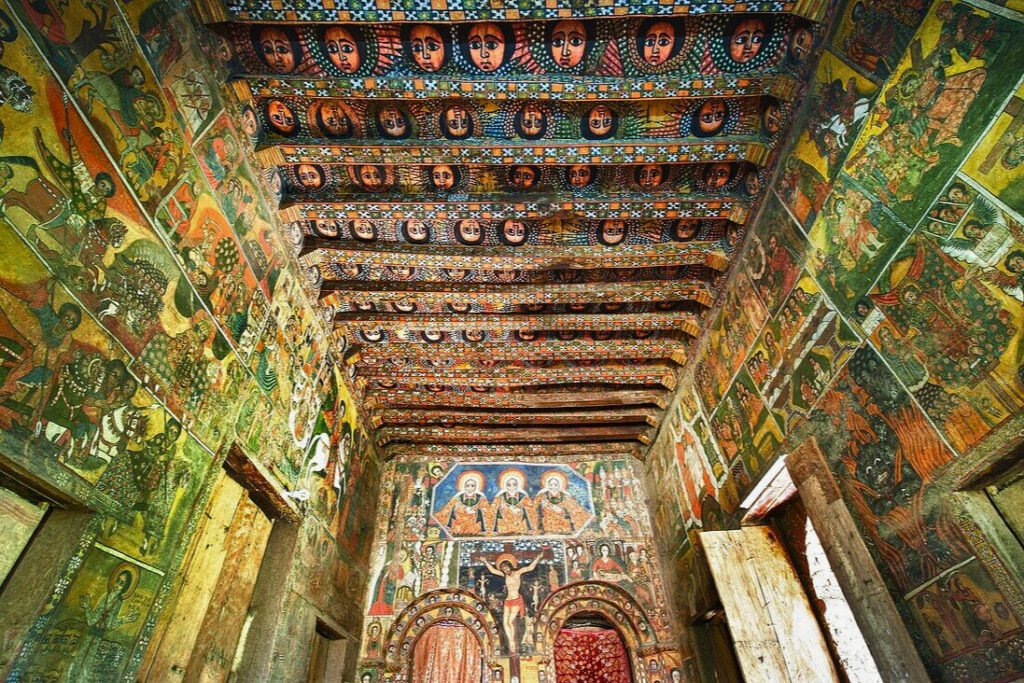
Deepening the Experience
Travel is richer when you slow down. Don’t rush Fasil Ghebbi. Sit on a stone bench. Watch how the light changes on the walls. Talk to the guides. Ask them what they were told as kids. Join a local for a coffee. Ethiopia doesn’t just tell its history—it pours it into your cup, offers it with both hands.
You might even stumble upon a poetry reading, or a church choir practicing nearby. Engage with the rhythm of life around the fortress. Stay curious, stay open.
Personal Reflection
On my last morning in Gondar, I returned to Fasil Ghebbi one more time. The sky was clear, and the fortress stood still, golden in the rising sun. I wasn’t just looking at old stones anymore. I was seeing the soul of a country that had held onto its identity through centuries of change.
As I watched children playing by the walls, I thought: history isn’t in books alone—it lives in places like this. Fasil Ghebbi isn’t just a relic; it’s a reminder of what endures. And in our fast-paced world, that reminder felt especially powerful.
Final Thoughts
Fasil Ghebbi is more than a royal fortress. It’s a story carved in stone—a story of power, faith, resilience, and imagination. Walk its grounds, and you’ll understand why it still stands. Why it matters.
💬 Have you been to Gondar? Did Fasil Ghebbi leave an imprint on you too? Tag us @CastleQuestChronicles and let us know.
👉 Want more castle tales? Check out Castillo de San Marcos in Florida—a fort built to defend an empire. Or explore Casa Loma in Toronto—where Gothic dreams rise above the city skyline.
The world is full of castles. And every one of them is waiting to tell you its story.
📸 If this article sparked your curiosity about the castles, follow along. We are on Instagram, Pinterest, Facebook, and X, too. More castles (and more stories) are just around the bend. Explore all our castle adventures here!


